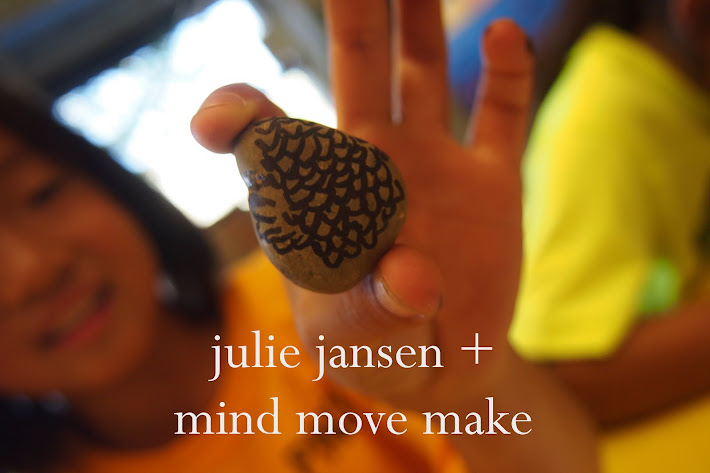After playing a movement game that involves learning every one's names, we read a book called In My Heart by author and illustrator Molly Bang. In My Heart is about a mother who is explaining to her son that even when they are apart he lives inside her heart all the time. No matter what she is doing, he is there with her in some capacity. The mother tells her little boy that he carries all the people he loves the most within his heart also.
This is my favorite image from the book. It is an illustration of the little boy sleeping, and all the people he loves are still with him:
After discussing the book I asked the children to picture all the people they love resting inside their own hearts. Then I asked them to select one person who they see everyday, a person who makes them very happy, and visualize this person. "Imagine that this person is happy and peaceful, doing something he or she loves to do." I said. I explained that we would be sending their loved one kind thoughts. "Repeat these ideas in your head after I say them out loud," I said. I paused after each phrase, allowing the message to sink in and giving time for reflection. These were the kind wishes we sent:
May you be safe
May you be healthy and strong
May you be happy
May you be peaceful
I gave the students time to send kind wishes in their own words by giving them space and silence. Looking around the room, all the children were focused and immersed in thoughts of their loved ones. After practicing together I gave the children the opportunity to share who they were thinking about and how the practice made them feel. I explained that this was optional and that they were welcome to say "pass" if they did not want to share. Everyone agreed that practicing loving kindness made them feel good, and most students chose to share who they were thinking about.
For the art portion of the class, the students cut out a heart shape and drew all the people they love most in their own hearts. They could either use pencil or permanent marker. Here are some images of the students' drawings.













